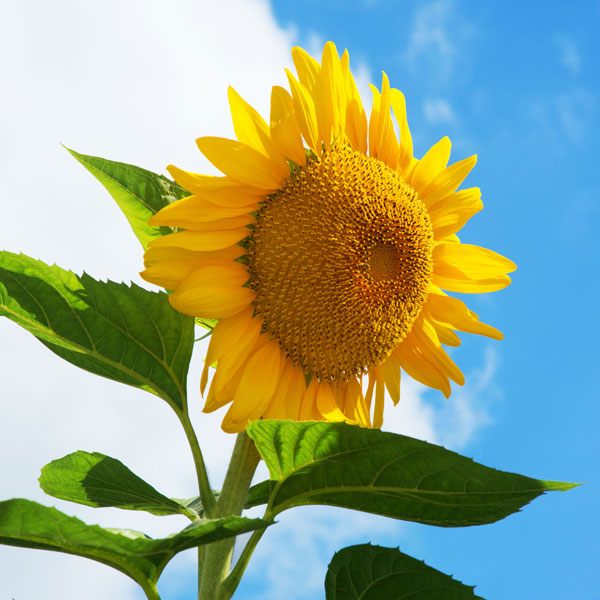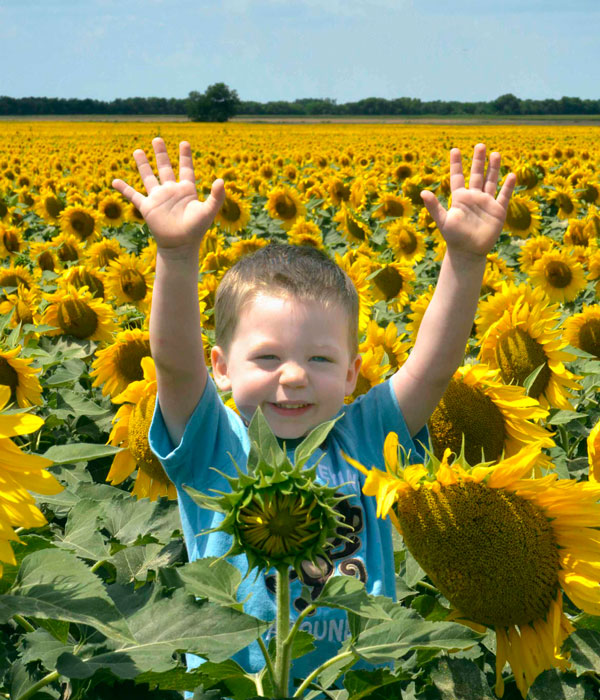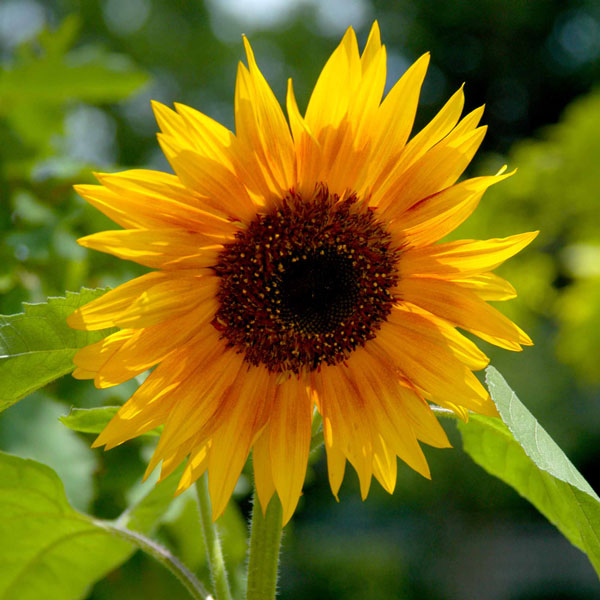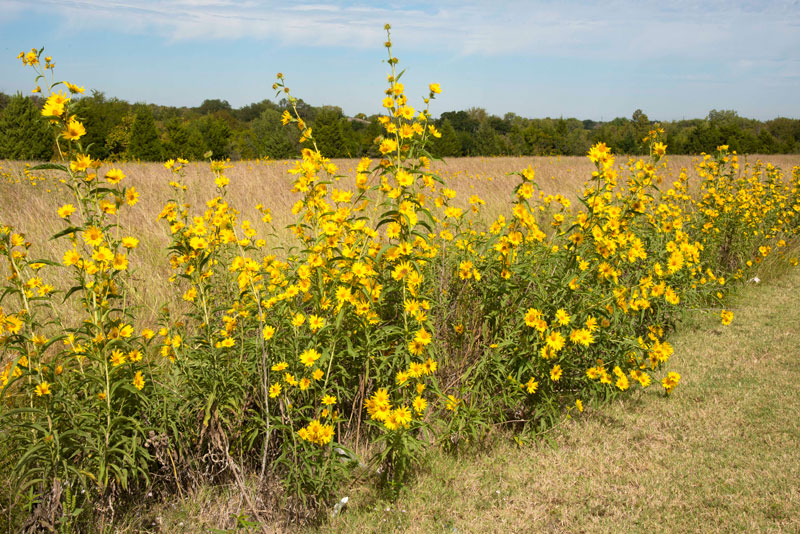Showers of sunflowers
They germinate and start growing with the first warm days of mid-spring. In fields, roadsides, even gardens. They’re native annual sunflowers (Helianthus annuus), and they grow just about everywhere.
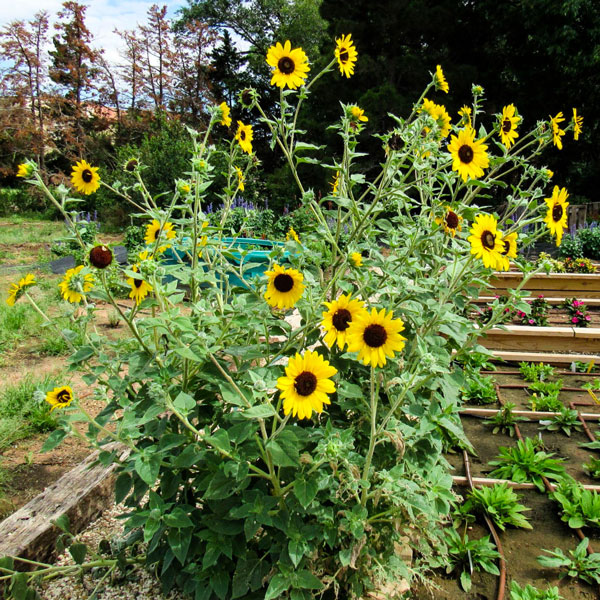
You’ll see them growing natively in almost all the 50 states. The exceptions: Vermont, New Hampshire, Maine, Hawaii, and Alaska. Everywhere else. There’s your answer to Q1.
But as widespread as they are, only one state has named it their state flower, and that’s the Sunflower State, Kansas of course. And that’s the answer to Q2. If you got both answers right, go buy yourself a big bag of sunflower seeds, an RC and celebrate.
Some other fun facts…
• The genus name of all the sunflowers is Helianthus, from Greek “helios” meaning “sun” and “anthos” meaning flower. The name refers to the flowers’ being heliotropic. That means they turn toward the sun as it passes overhead from morning until night. Personal opinion: more is made out of that theory than I have actually witnessed in growing the various types.
• Alternate thought: the flowers also look like simplistic representations of the sun. That could be another way for them to earn their common name.
• Sunflowers are composites. That means that what we are calling “flowers” are actually huge communities of tiny florets. You will see “ray” florets surrounding the outer edges of the floral head. They will play the part of the petals if this were a single flower instead of a composite.
Conversely, the pincushion of “disk” flowers make up the centers of the heads. Those are where the seeds will form.
Give me more…
Here is a list of other Composites you’re likely to find in Texas landscapes and gardens:
• Black-eyed Susan and gloriosa daisies Rudbeckia sp.
• Purple coneflowers Echinacea purpurea
• Tickseed Coreopsis sp.
• Indian blanket Gaillardia puchella
• Zinnia Zinna elegans
• Garden mums Chrysanthemum morifolium
• Marigold Tagetes sp.
• The tallest giant sunflower exceeded 30 ft., 1 in. (Germany, 2014)
• They’re a great source of pollen and seed – great pollinator plants for butterflies and bees while they’re flowering and great seed sources for goldfinches, chickadees, wrens, mourning doves, cardinals, and other songbirds all year long, particularly in winter.
• If you’re buying sunflower seeds for your birds, the smaller black, oil-type seeds will be the most popular for most species. You can buy them in-shell or shelled and mixed in with blends of other seeds for specialized feeders. Buy a raccoon baffle. Otherwise, you’ll soon find unwanted visitors draining your feeders dry within minutes.
• One species, Maximilian sunflower (H. maximiliani) is perennial. It is frequently seen along roadsides and on prairies of North and Central Texas where it grows to 8 ft. tall on long, prominent stalks. Some of the most beautiful Maximilian sunflowers I ever saw were along I35 south of Oklahoma City 35 years ago one fall. Flowers line the stems in showy form. Birds, pollinators and deer love the plants.
It’s too late to be planting sunflowers from seed now for bloom yet this year, but this is the perfect time to collect mature seed and store it dry and cool in the fridge for planting next spring. Start searching the Web, too, for less common native species. If you have a child or a grandchild who’s about to do a science project, sunflowers might make a fun one. It’s a good time for planning that effort – much better than that Sunday night the morning before it’s due!

